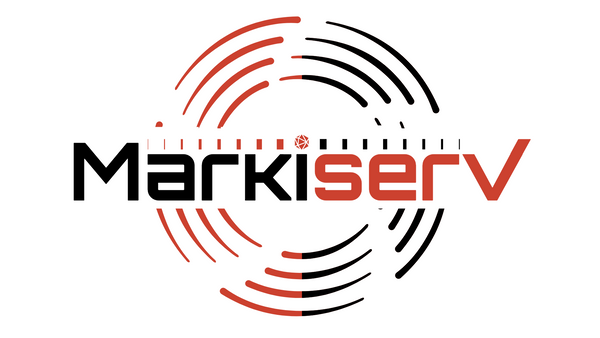
The Top CMS Platforms for Businesses in 2025: Which One Is Right for You?
Share
In today’s fast-paced digital world, businesses need powerful content management systems (CMS) to manage their websites efficiently. Whether you’re a small business or a large enterprise, choosing the right CMS platform is crucial for creating a seamless user experience, improving SEO, and enabling scalability. With so many options available, selecting the right one can be overwhelming. In this blog post, we’ll break down some of the top CMS platforms in 2025 and explain why they’re perfect for businesses like yours. Over 68% of websites today use a CMS, making these platforms highly in demand.
1. WordPress: The All-Rounder for Flexibility and Scalability
WordPress continues to dominate the CMS landscape, powering over 40% of websites on the internet. One of its biggest advantages is its versatility—whether you’re running a blog, an e-commerce site, or a corporate portal, WordPress can handle it all. It offers an extensive range of themes and plugins that allow businesses to customize their site to suit their needs. The open-source nature of WordPress means it’s highly flexible, and with the right developer, you can build any website feature you can imagine.
Moreover, WordPress is SEO-friendly out of the box, thanks to features like customizable permalinks, fast page loading times, and integration with plugins like Yoast SEO. The platform also boasts an active community, meaning that support is just a click away.
2. Shopify: The Best CMS for E-Commerce
For businesses primarily focused on e-commerce, Shopify is the CMS to consider. Shopify is specifically built for online stores, and it offers everything from product management to payment gateway integration. With its drag-and-drop interface, even those with no technical background can set up and manage a professional online store.
Shopify also stands out for its security features. It is PCI DSS compliant, ensuring that customer payment data is safe. Additionally, Shopify provides a wide array of apps to enhance the functionality of your e-commerce store, such as email marketing, shipping integrations, and inventory management tools.
If your goal is to launch and scale an online store quickly, Shopify offers everything you need to get started.
3. Wix: The Easiest CMS for Small Businesses
Wix is a cloud-based CMS that focuses on providing a user-friendly experience. Its drag-and-drop editor makes it easy for anyone to build a website, even without coding knowledge. Wix is ideal for small businesses or startups that need to establish an online presence quickly and affordably.
The platform comes with a variety of professional templates that are mobile-optimized, making it an attractive choice for businesses focused on reaching customers on mobile devices. Wix also offers robust SEO tools, social media integrations, and a range of apps to add features to your website.
However, as your business grows, you may find Wix limiting in terms of scalability and customization. While it’s perfect for small to medium businesses, larger companies with complex needs might outgrow Wix as they scale.
4. Drupal: The Go-To CMS for Large Enterprises
If you’re running a large-scale enterprise, Drupal is the CMS to consider. Known for its flexibility and robustness, Drupal is an open-source platform that can handle complex websites with high volumes of traffic and data. It’s a developer-friendly CMS, offering advanced customization and integration capabilities.
Drupal’s greatest strengths lie in its scalability, security, and flexibility. Businesses that require a highly customizable CMS for their enterprise-level websites should look no further. It is also ideal for websites that require a large amount of content management and user roles, such as educational institutions or large corporations.
However, Drupal requires a certain level of technical expertise to set up and manage effectively. Businesses without an in-house development team may find it challenging to work with.
5. Squarespace: The Best for Design-Centric Businesses
If you’re a business that prioritizes design aesthetics, Squarespace is a fantastic choice. Known for its visually stunning templates, Squarespace enables users to create beautiful, responsive websites with ease. The platform is ideal for photographers, artists, and small businesses in the creative industry who want to showcase their portfolio or products.
Squarespace offers a streamlined and user-friendly interface. It also provides built-in e-commerce functionality, so businesses can sell their products directly from their website. The platform also includes SEO features, analytics, and social media integrations.
The downside of Squarespace is its relative lack of flexibility compared to other platforms like WordPress. While it’s a solid choice for businesses that value design and simplicity, those with specific functional needs might find it limiting.
6. Joomla: A Strong Alternative for Content-Rich Websites
Joomla is another open-source CMS that stands as a strong alternative to WordPress and Drupal. It offers flexibility and customization options, making it a suitable choice for content-heavy websites, such as news outlets, blogs, and forums. Joomla’s built-in features make it a good choice for businesses that need to manage complex content structures, including multiple languages and user roles.
One of Joomla’s key advantages is its ability to scale efficiently for large websites, while still being relatively user-friendly compared to Drupal. However, like Drupal, Joomla can be challenging for beginners without technical knowledge, so it may not be the best option for businesses that require a simpler setup.
7. Webflow: The Ultimate CMS for Design Flexibility
For businesses that need high design flexibility but don’t want to rely on a developer, Webflow is a great option. Webflow is a cloud-based CMS that offers a design-first approach, allowing businesses to create visually appealing websites without writing any code. Its drag-and-drop editor offers immense customization capabilities, giving businesses the flexibility to create pixel-perfect designs.
Webflow also has powerful CMS capabilities, enabling businesses to manage dynamic content such as blog posts, portfolios, and product pages. It also allows for advanced integrations and provides hosting as part of the service. Webflow’s ability to produce responsive websites without relying on third-party tools or plugins sets it apart from other CMS platforms.
However, Webflow can be more expensive than other platforms, especially for businesses that need advanced features or have large websites.
Conclusion: Choosing the Right CMS for Your Business
Selecting the right CMS for your business is a crucial decision that will affect your website’s performance, user experience, and scalability. Each CMS has its strengths and weaknesses, and your choice will depend on your business’s needs, goals, and technical expertise.
For businesses looking for a balance of flexibility, scalability, and ease of use, WordPress is the top choice. If you’re in the e-commerce space, Shopify is unmatched in terms of functionality and security. For small businesses with design-centric needs, Wix and Squarespace offer user-friendly, visually stunning options. For large enterprises, Drupal and Joomla offer the flexibility and scalability required to handle complex websites.
Take the time to assess your business’s needs and goals before selecting a CMS. With the right CMS platform in place, you’ll be able to create a website that not only meets your needs but helps you grow and succeed in the digital landscape.
Helpful Links to Learn More:
WordPress: Official Website - Learn more about WordPress, its features, and how to get started with this versatile CMS.
Drupal: Introduction and Documentation - Dive into the robust features of Drupal for complex, enterprise-level websites.
Joomla: Learn Joomla - Access tutorials, documentation, and resources for building websites with Joomla.
We use Shopify.
